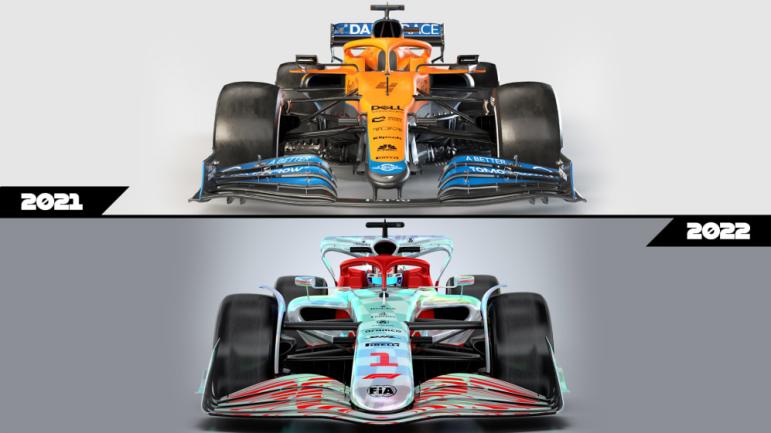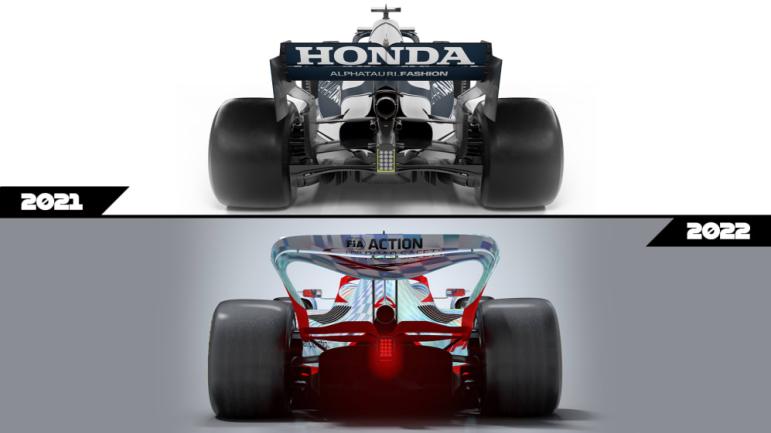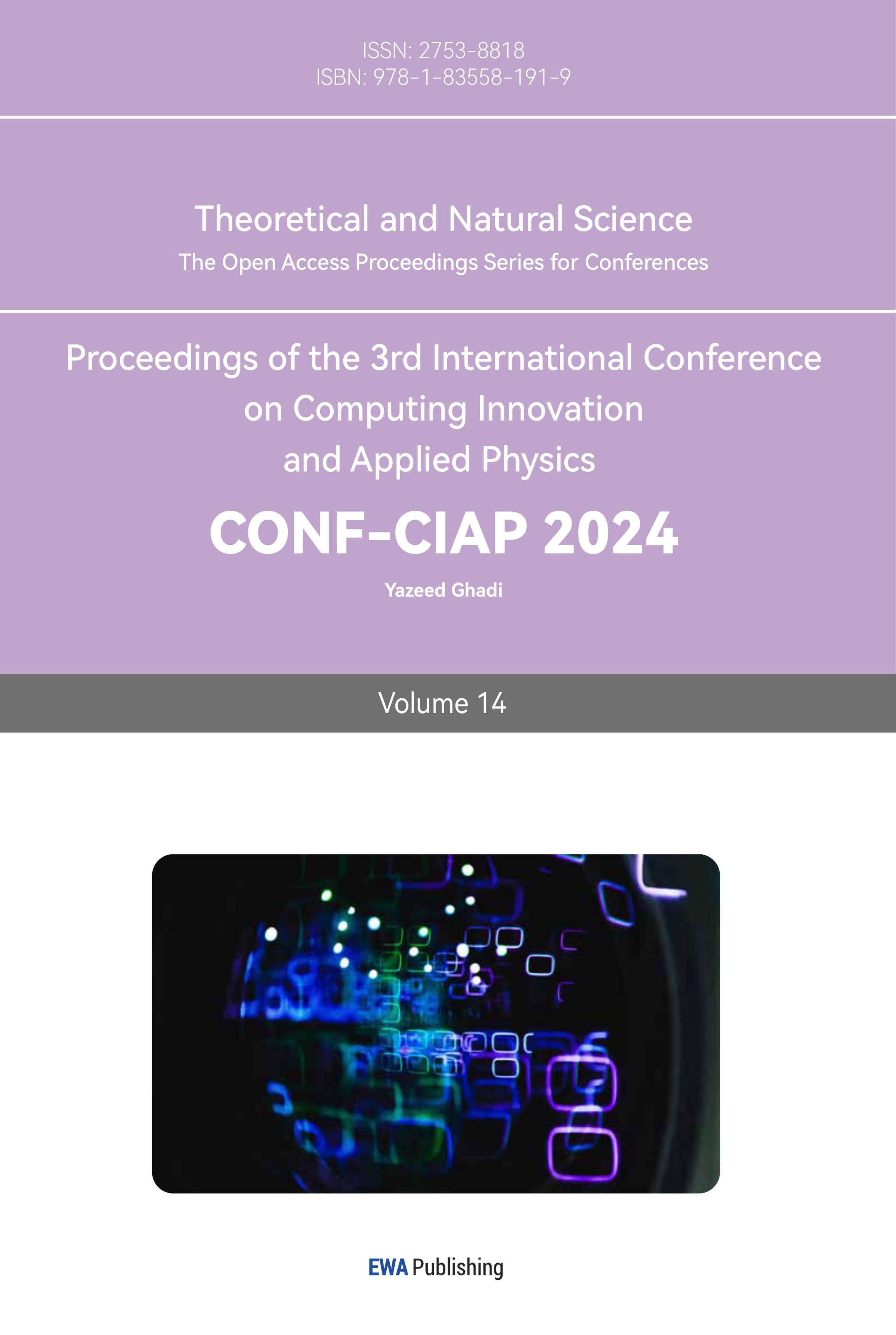1. Introduction
The aerodynamic development in Formula One Racing has been pivotal in shaping the performance and safety of the cars. As teams pursue greater speeds and better handling, they delve deep into understanding airflow around the cars.
In the beginning, about 1950s and early 1960s, Formula one was dominated by European teams and drivers, and aerodynamics was largely an afterthought. Most cars did not have aerodynamic design in mind. However, as the speed increased, teams began to realize the importance of aerodynamics. Streamline bodywork and simple front wings were designed to reduce drag. The late 1960s to 1970s, the introduction of wings and spoilers to gain downforce improved the grip and cornering speed. Moreover, those aerodynamic design were simple designs. However, the increase in downforce also led to a series of accidents, promoting a rethink of aerodynamic rules and regulation. In the late 1970s, the ground effect was brought to the teams. The idea was to shape the underbody of the car to create a low-pressure area, which make the car sucking to the ground, and increase downforce without adding other drag. However, ground effects were banned due to safety concerns, as they made cars difficult to control in certain conditions.
From 1990s to present, the computational fluid dynamics (CFD) and wind tunnels make a new era in Formula One aerodynamics. These tools allow teams to experiment with thousands of different configurations to find the most aerodynamically efficient designs. The introduction of bargeboards, intricate front wings, and rear diffusers becomes common, and the sport starts seeing a rapid revolution in aerodynamic detailing. As F1 moves into the future, aerodynamics will continue to be a major area of research and development. With new regulations aimed at improving competitiveness and sustainability, teams will have to innovate within tighter constraints, making aerodynamics more crucial than ever.
This paper aims to provide a comprehensive overview of the evolution and advancements in aerodynamic design and technology in Formula One over the years. Through a synthesis of historical trends, technical breakthroughs, and empirical data, this paper may provide a holistic understanding of aerodynamics in the context of Formula One racing.
2. Introduction of Aerodynamics to F1
Since 1960s, this was a transformative decade for F1, marking a shift from elementary designs to a greater focus on engineering and technology. One of the most significant developments was the introduction of aerodynamics as a critical factor in car performance. One of the most important innovations of this era was the introduction of wings and spoilers, which were added to the front and rear of the cars.
Wings can produce downforce and increase the tires grip on the road better. The primary role of the front wing is to generate downforce on the car’s front section. Typically, the wing contributes to about 25-30% of the overall downforce [1]. As the front wing and the rear wing have to be balanced, due to the stability of the car, which avoids the car suffering corner entry oversteering.
Since Colin Chapman brought wings and downforce on F1 cars, they got three times of world champions in 1960s [2]. When the addition of aerodynamic features led to increased performance, it also brought some new challenges. These early wing designs were often hastily added and inadequately tested, leading to multiple failures and accidents. As a result, in 1968 highly mounted rear wings were banned by the Federation International de I’Automobile (FIA) because of their failures [3]. FIA introduced regulations to ensure that aerodynamic elements were safely integrated into the car design. As the impact of aerodynamics became more apparent, teams started to invest more resources in research and development. This intensified the competition and led to a variety of innovative aerodynamic solutions. For example, the idea of shaping the car body itself to produce aerodynamic benefits began to take root. The late 1960s laid the groundwork for future aerodynamic innovations such as ground effects and underbody aerodynamics, which would come to fruition in the 1970s and beyond. The sport started to attract specialists in fluid dynamics, setting the stage for even more sophisticated approaches in the coming decades.
3. Ground Effect Era
The ground effect is a kind of aerodynamic phenomenon where the airflow between the car’s underbody and the track surface is accelerated, creating an area of low pressure beneath the car. The car is sucked on the track, providing increased traction and allowing for higher cornering speed. This effect also can be called as Venturi effect, which is a result of Bernoulli’s principle. Utilizing the Venturi effect, when a fluid flows through a narrowed region, its speed accelerates while its static pressure drops. This effect is rooted in Bernoulli’s theorem. A pressure difference exists with higher pressure on top and lower pressure beneath the car. This difference results in significant downforce. The downforce produced by the car’s underside is termed the “ground effect,” which acts like a vacuum, drawing the car closer to the road [4].
The ground effect began in 1970s. During the late 1970s and early 1980s, cars utilizing ground effect technology were predominant, especially with Team Lotus under Colin Chapman’s leadership paving the way. The Lotus78 featured inverted wing designs within sidepods, leading to the creation of two expansive Venturi tunnels. However, the real breakthrough was the incorporation of sliding skirts. These skirts sealed the space between the track and the car’s side, enhancing the Venturi tunnels’ effectiveness and substantially boosting downforce without a corresponding significant increase in drag [5]. However, ground effect cars had some inherent problems. The massive increase in downforce made the cars extremely fast in corners, but they were sensitive to changes in ride height. Hitting a bump or a kerb could disturb the air flowing under the car, leading to a sudden loss of downforce and grip. This made them challenging to drive and led to some big accidents. Therefore, FIA grew concerned about the ground effect cars’ potential dangers. They introduced new regulations for the 1983 season, which effectively banned the extreme ground effect designs. The flat underbody was mandated, and the side skirts, which helped seal the underbody airflow, were banned. This significantly reduced the potential for ground effect [6].
4. Drag Reduction System and Return of Ground Effect
The Drag Reduction System (DRS) was introduced to Formula 1 in the 2011 season. The main purpose of DRS was to aid overtaking. In the 2000s, the overtaking become very difficult due to the aerodynamic turbulence (dirty air) produced by front cars. The dirty air reduced the downforce, making it difficult to follow closely and overtake.
The DRS works by adjusting the angle of a moveable flap on the car’s rear wing. When activating, it reduces the drag on the car, allowing it to achieve higher straight-line speeds. Consequently, the aerodynamic resistance decreases by roughly 20%, enhancing the chances of passing other vehicles [7].
A multi-element rear wing tested in free-flow conditions saw an 83% decrease in aerodynamic drag. Meanwhile, a ground-effect tested multi-element front wing experienced a 70% drop. Combined, these two mechanisms led to a 53% overall reduction in the car’s aerodynamic resistance [8]. In 2022, the ground effect returned, in order to make the racing more competitive, although it was used in the late 1970s and 1980s before being heavily regulated and effectively banned due to safety concerns. In the new regulation, the cars have a simplified front wing and a much more sculpted floor design, channeling air beneath the car to generate downforce.
The front wing of 2022 model is designed to be more aerodynamically stable than its intricate predecessors, allowing a driver to maintain performance when closely following another car and producing less turbulent airflow, as shown in Figure 1. Moreover, the 2022 rear wing has been notably redesigned, featuring curved tips at the top instead of linear endplates and extra components at the bottom, as shown in Figure 2. This updated design aims to redirect the aerodynamic wake upwards and over the trailing car, rather than sending it straight into it, addressing the current challenges faced by drivers when following closely behind another vehicle. For the ground effect, the floor is also redesigned by the racing team. They employ contoured underfloor channels rather than a tiered floor [9]. This change allows the car to produce large amount of downforce and less disruptive airflow for the car behind at the same time.
The front wing’s proximity to the ground amplifies the downforce due to ground effects from the wing’s shape. Katz, suggests that these ground effects typically boost the front wing’s downforce by around 30% to 50% [10]. These changes, along with several others, aim to make the sport more competitive, reduce costs, and improve the overall spectacle. The actual outcome, as with all regulations, depends on how teams interpret and adapt to the rules, as well as how races are played out on track.

Figure 1. Front wing differences.

Figure 2. Rear wing differences.
5. Conclusion
Formula One has always been at the cutting edge of technological advancement, while aerodynamics plays a pivotal role in shaping the sport’s evolution. The continuous quest for speed and performance has led teams to push the boundaries of aerodynamic efficiency, leading to some of the most intricate and sophisticated car designs in F1 history. The introduction of technologies like DRS and the return of ground effect principles showcases the sport’s adaptability and its willingness to evolve for better competition and closer racing. For future, the direction seems clear: while speed and innovation remain paramount, there is a growing emphasis on ensuring close racing and leveling the playing field. This balance between performance and spectacle is crucial to retain and attract fans, making the sport more exciting and unpredictable. With the increasing influence of sustainable technologies and the push for eco-friendly racing solutions, future aerodynamic developments might also consider factors like energy efficiency and minimal environmental impact. Formula One, being a beacon of automotive innovation, is set to lead the way in showcasing how high-performance racing can coexist with environmental responsibility.
References
[1]. KARTHIKEYAN, MONISH KUMAR, ANURAG PARIDA. “DESIGN, ANALYSIS AND FABRICATION OF F1 CAR FOR IMPROVING AERODYNAMIC EFFICIENCY.” Hindustan University, May 2022.
[2]. Sarucan, Fatih. “Optimizing Formula 1 Rear Wings with NACA Series Airfoils for Maximum Performance.” Journal of Motorsport Engineering, Motorsport Publishing Co., Apr, 2023
[3]. Jenkinson D., “A story of Formula 1”, Greenville Publishing Company Ltd., 1960
[4]. “The Venturi effect”. Wolfram Demonstrations Project. Retrieved 2009-11-03.
[5]. Somerfield, Matt. “Retro F1 tech: The ground effect era.” Motorsport.com, Fed 2017,
[6]. Groote, Steven” F1 rules and stats 1980-1989.” F1technical.net,01 Jan. 2009, www.f1technical.net/articles/26. Accessed 12 Sep 2023.
[7]. Bhatnagar, U.R. Formula 1 Race Car Performance Improvement By Optimization of the Aerodynamic Relationship Between the Front and Rear Wings. Master’s Thesis, The Pennsylvania State University, University Park, PA, USA, 2014
[8]. Wordley, S.; McArthur, D.; Phersson, L.; Tudball Smith, D.; Burton, D. Development of a Drag Reduction System (DRS) for Multi-Element Race Car Wings. In Proceedings of the 19th Australasian Fluid Mechanics Conference, AFMC 2014, Melbourne, Australia, 8–11 December 2014.
[9]. Reynolds, Jonny. “ANALYSIS: Comparing the key differences between the 2021 and 2022 F1 car designs”, Formula One World Championship Limited., 15 July. 2021
[10]. Katz, J. (1995). Race Car Aerodynamics. Cambridge, MA: Bentley Publishers
Cite this article
Zhang,Z. (2023). Study on aerodynamic development in Formula One racing. Theoretical and Natural Science,14,38-41.
Data availability
The datasets used and/or analyzed during the current study will be available from the authors upon reasonable request.
Disclaimer/Publisher's Note
The statements, opinions and data contained in all publications are solely those of the individual author(s) and contributor(s) and not of EWA Publishing and/or the editor(s). EWA Publishing and/or the editor(s) disclaim responsibility for any injury to people or property resulting from any ideas, methods, instructions or products referred to in the content.
About volume
Volume title: Proceedings of the 3rd International Conference on Computing Innovation and Applied Physics
© 2024 by the author(s). Licensee EWA Publishing, Oxford, UK. This article is an open access article distributed under the terms and
conditions of the Creative Commons Attribution (CC BY) license. Authors who
publish this series agree to the following terms:
1. Authors retain copyright and grant the series right of first publication with the work simultaneously licensed under a Creative Commons
Attribution License that allows others to share the work with an acknowledgment of the work's authorship and initial publication in this
series.
2. Authors are able to enter into separate, additional contractual arrangements for the non-exclusive distribution of the series's published
version of the work (e.g., post it to an institutional repository or publish it in a book), with an acknowledgment of its initial
publication in this series.
3. Authors are permitted and encouraged to post their work online (e.g., in institutional repositories or on their website) prior to and
during the submission process, as it can lead to productive exchanges, as well as earlier and greater citation of published work (See
Open access policy for details).
References
[1]. KARTHIKEYAN, MONISH KUMAR, ANURAG PARIDA. “DESIGN, ANALYSIS AND FABRICATION OF F1 CAR FOR IMPROVING AERODYNAMIC EFFICIENCY.” Hindustan University, May 2022.
[2]. Sarucan, Fatih. “Optimizing Formula 1 Rear Wings with NACA Series Airfoils for Maximum Performance.” Journal of Motorsport Engineering, Motorsport Publishing Co., Apr, 2023
[3]. Jenkinson D., “A story of Formula 1”, Greenville Publishing Company Ltd., 1960
[4]. “The Venturi effect”. Wolfram Demonstrations Project. Retrieved 2009-11-03.
[5]. Somerfield, Matt. “Retro F1 tech: The ground effect era.” Motorsport.com, Fed 2017,
[6]. Groote, Steven” F1 rules and stats 1980-1989.” F1technical.net,01 Jan. 2009, www.f1technical.net/articles/26. Accessed 12 Sep 2023.
[7]. Bhatnagar, U.R. Formula 1 Race Car Performance Improvement By Optimization of the Aerodynamic Relationship Between the Front and Rear Wings. Master’s Thesis, The Pennsylvania State University, University Park, PA, USA, 2014
[8]. Wordley, S.; McArthur, D.; Phersson, L.; Tudball Smith, D.; Burton, D. Development of a Drag Reduction System (DRS) for Multi-Element Race Car Wings. In Proceedings of the 19th Australasian Fluid Mechanics Conference, AFMC 2014, Melbourne, Australia, 8–11 December 2014.
[9]. Reynolds, Jonny. “ANALYSIS: Comparing the key differences between the 2021 and 2022 F1 car designs”, Formula One World Championship Limited., 15 July. 2021
[10]. Katz, J. (1995). Race Car Aerodynamics. Cambridge, MA: Bentley Publishers









